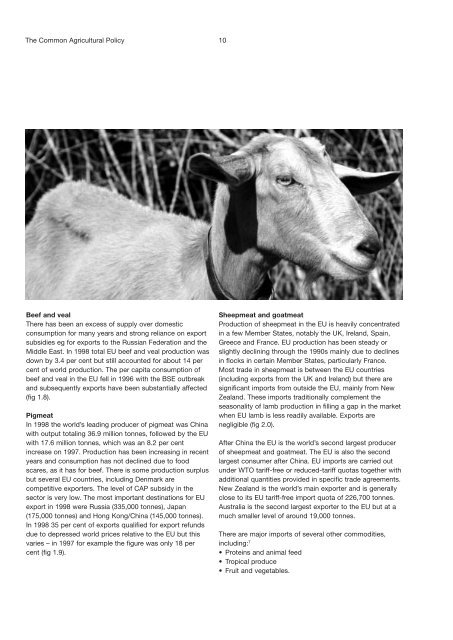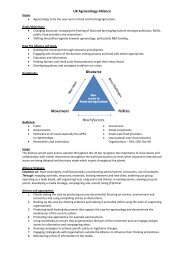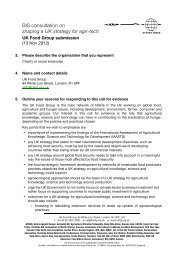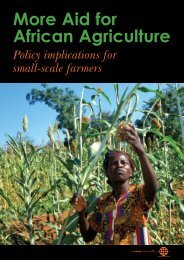Common Agricultural Policy - UK Food Group
Common Agricultural Policy - UK Food Group
Common Agricultural Policy - UK Food Group
Create successful ePaper yourself
Turn your PDF publications into a flip-book with our unique Google optimized e-Paper software.
The <strong>Common</strong> <strong>Agricultural</strong> <strong>Policy</strong> 10<br />
Beef and veal<br />
There has been an excess of supply over domestic<br />
consumption for many years and strong reliance on export<br />
subsidies eg for exports to the Russian Federation and the<br />
Middle East. In 1998 total EU beef and veal production was<br />
down by 3.4 per cent but still accounted for about 14 per<br />
cent of world production. The per capita consumption of<br />
beef and veal in the EU fell in 1996 with the BSE outbreak<br />
and subsequently exports have been substantially affected<br />
(fig 1.8).<br />
Pigmeat<br />
In 1998 the world’s leading producer of pigmeat was China<br />
with output totaling 36.9 million tonnes, followed by the EU<br />
with 17.6 million tonnes, which was an 8.2 per cent<br />
increase on 1997. Production has been increasing in recent<br />
years and consumption has not declined due to food<br />
scares, as it has for beef. There is some production surplus<br />
but several EU countries, including Denmark are<br />
competitive exporters. The level of CAP subsidy in the<br />
sector is very low. The most important destinations for EU<br />
export in 1998 were Russia (335,000 tonnes), Japan<br />
(175,000 tonnes) and Hong Kong/China (145,000 tonnes).<br />
In 1998 35 per cent of exports qualified for export refunds<br />
due to depressed world prices relative to the EU but this<br />
varies – in 1997 for example the figure was only 18 per<br />
cent (fig 1.9).<br />
Sheepmeat and goatmeat<br />
Production of sheepmeat in the EU is heavily concentrated<br />
in a few Member States, notably the <strong>UK</strong>, Ireland, Spain,<br />
Greece and France. EU production has been steady or<br />
slightly declining through the 1990s mainly due to declines<br />
in flocks in certain Member States, particularly France.<br />
Most trade in sheepmeat is between the EU countries<br />
(including exports from the <strong>UK</strong> and Ireland) but there are<br />
significant imports from outside the EU, mainly from New<br />
Zealand. These imports traditionally complement the<br />
seasonality of lamb production in filling a gap in the market<br />
when EU lamb is less readily available. Exports are<br />
negligible (fig 2.0).<br />
After China the EU is the world’s second largest producer<br />
of sheepmeat and goatmeat. The EU is also the second<br />
largest consumer after China. EU imports are carried out<br />
under WTO tariff-free or reduced-tariff quotas together with<br />
additional quantities provided in specific trade agreements.<br />
New Zealand is the world’s main exporter and is generally<br />
close to its EU tariff-free import quota of 226,700 tonnes.<br />
Australia is the second largest exporter to the EU but at a<br />
much smaller level of around 19,000 tonnes.<br />
There are major imports of several other commodities,<br />
including: 7<br />
•Proteins and animal feed<br />
•Tropical produce<br />
•Fruit and vegetables.





